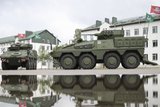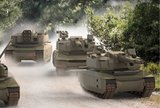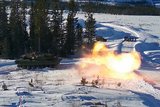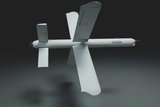First DRS humvee with persistent field power delivered to USMC
DRS Technologies, Inc., A Finmeccanica Company, announced its Test and Energy Management business unit has delivered the first of its next generation On-Board Vehicle Power (OBVP) equipped HMMWVs to the U.S. Marine Corps Systems Command, Program Manager of Expeditionary Power Systems.
The fifteen OBVP HMMWV’s currently being produced will be sent to the operating forces for user evaluation.
The OBVP equipped vehicle is capable of producing 10kW of power while mobile and 30 kW of power in the stationary mode. LTG (Ret.) Jerry Sinn, President, DRS Technologies Tactical Systems Group states, “The Marine Corps is actively working to reduce their logistical footprint within the Marine Air-Ground Task Force. When utilizing the HMMWV to provide power in an expeditionary environment, the OBVP will allow the Marine Corps to eliminate transportation of multiple generator sets aboard amphibious ships, thus saving valuable deck space.”
LTG Sinn added, “We are fortunate to have partnered with the USMC in the validation and delivery of this capability and believe that it offers tremendous benefit in terms of providing a more flexible, resilient, and persistent power source in the field. DRS is committed to this technology and its success in extending the value of the legacy HMMWV fleet for the DoD.”
Source: DRS Technologies
More from Land Warfare
-
![Hungary set to begin using Hero 400 loitering munitions]()
Hungary set to begin using Hero 400 loitering munitions
Developed by Israel's Uvision and with systems being sold in the thousands to multiple European NATO countries and the US, the Hero family of loitering systems is also in production in the US and Italy, the latter through Rheinmetall.
-
![Croatia orders Leopards and CAESAR howitzers as Lithuania orders more CAESARs]()
Croatia orders Leopards and CAESAR howitzers as Lithuania orders more CAESARs
The Leopard is becoming the tank of choice in central and eastern Europe as Croatia joins Lithuania, the Czech Republic and Hungary in ordering the platform. Lithuania and Croatia have also signed for CAESAR howitzers.
-
![Light Reconnaissance Strike – enabling a vital mission set (Studio)]()
Light Reconnaissance Strike – enabling a vital mission set (Studio)
A new system-of-systems concept will unlock digital integration of sensors and weapons for Light Forces, allowing them to shape the battlefield environment on their own terms and upgrade legacy platforms.






















